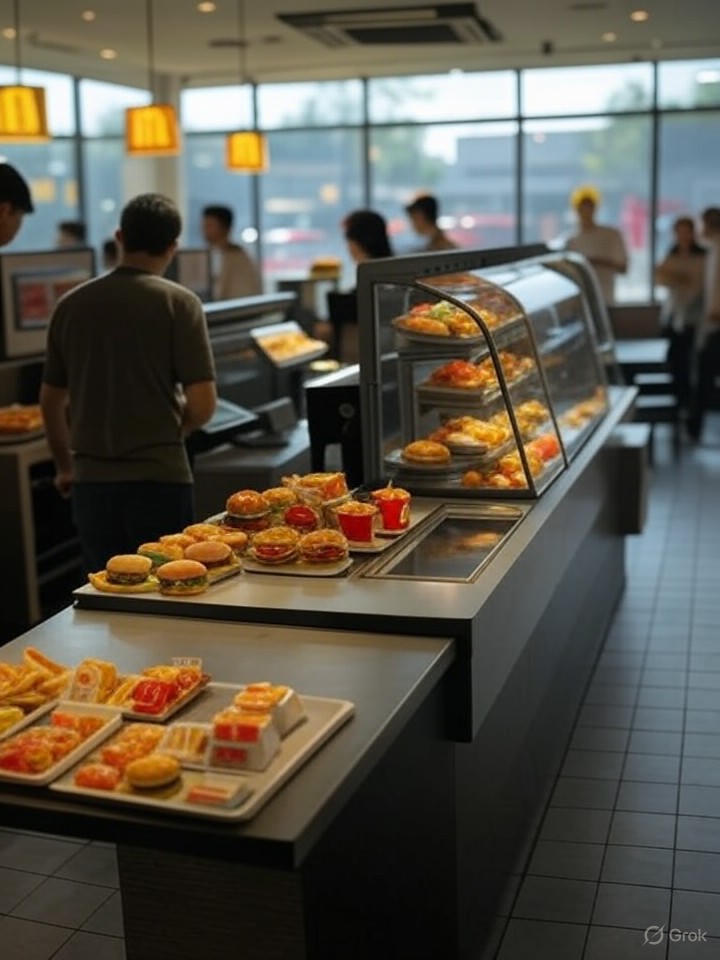
Fast-food chains are adapting their pricing strategies as they address ongoing inflation concerns. In 2025, major brands like McDonald’s and Wendy’s are honing in on a critical price point: $10. This threshold has become vital for menu structuring and promotional strategies, as crossing this line can shift consumer perceptions towards meals being less affordable.
Recent analyses reveal that this $10 ceiling serves as a psychological barrier for consumers, particularly in a climate of persistent economic uncertainty. As ingredient and labor costs rise, fast-food executives are striving to balance profitability with maintaining customer loyalty. According to a MarketWatch report, anything priced over $10 is often viewed as no longer a “bargain,” leading chains to innovate with bundled deals and limited-time offers to keep their customer base engaged.
The Psychology Behind Pricing Strategies
The approach to pricing reflects principles from behavioral economics, where small adjustments can significantly impact consumer behavior. For instance, a meal priced at $9.99 is perceived as substantially cheaper than one at $10.01, despite the minimal difference. Discussions on social media platforms, including posts on X, formerly Twitter, highlight how fast-food chains are adjusting their pricing to avoid breaching this psychological barrier, a sentiment echoed in real-time updates from August 23, 2025.
Historical data also supports this pricing strategy. A study cited by WDBJ7 news indicates that over the past decade, prices at major chains have surged by up to 100%, outpacing national inflation rates. In response, many chains are revisiting value-oriented pricing. For example, McDonald’s reintroduced its $5 meal deal in mid-2024 to counteract declining sales, a strategy that has continued into 2025 based on positive consumer feedback.
Adapting to Economic Pressures
Inflation has compelled fast-food chains to respond creatively. A case study featured in the Harvard Business Review discusses how fictional chain Burger & Bites faced challenges due to fluctuating costs, considering dynamic pricing through digital menus. In reality, Wendy’s encountered backlash in 2024 over rumors of surge pricing, as noted by the advocacy group More Perfect Union, which highlighted planned experiments with variable pricing for 2025. These plans have since been adjusted to maintain customer trust.
Experts from Revenue Management Solutions suggest that while dynamic pricing can enhance profits, it risks damaging consumer trust if not implemented transparently. To mitigate this risk, chains are increasingly utilizing loyalty programs and personalized discounts, ensuring that core items rarely exceed the $10 mark.
Menu engineering is also a crucial factor in this pricing strategy. Insights from Toast’s blog indicate that while fast-food prices are rising, chains are emphasizing “value layers.” This involves offering tiered menu options where premium add-ons can increase the total price without exceeding the base threshold. Both Burger King and Taco Bell have adopted similar strategies, launching $6 bundles that include entrees, sides, and drinks, as reported in Business Insider’s analysis of budget meals across chains.
Consumer sentiment reflects growing frustration with the rising cost of meals, as users on X discuss the shift to $15 to $17 meals. This has prompted chains to refine their pricing models, focusing on perceived fairness. According to discussions on X, customers are more tolerant of price increases but are sensitive to perceptions of greed, pushing chains to adapt accordingly.
As 2025 unfolds, industry reports such as QSR Magazine’s annual QSR 50 highlight resilience through innovation, including the introduction of AI-driven pricing and wellness-oriented menu options. The $10 barrier remains pivotal; crossing it could alienate budget-conscious diners, particularly given economic challenges like trade uncertainties.
In conclusion, the focus on sub-$10 pricing while integrating innovative strategies will define the future of fast food. Chains that successfully navigate this landscape, potentially utilizing technology for dynamic adjustments without alienating customers, are likely to thrive. The evolving consumer landscape emphasizes that value is not solely about cost but also about the perceived equity in every meal served.






